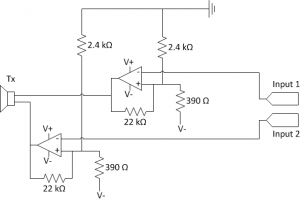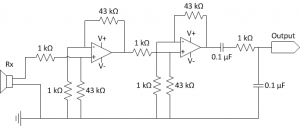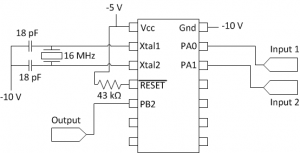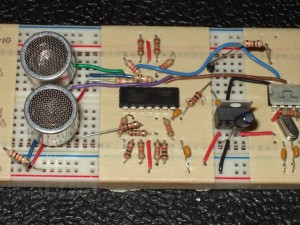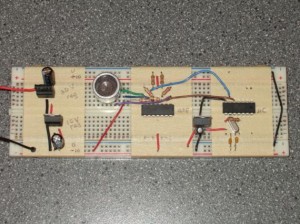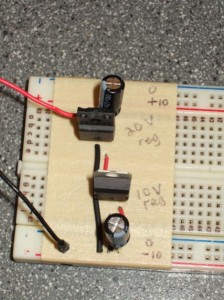I mentioned the US40KT-01 transducer pair from Meas Spec before, but it’s an air sensor. One could cover it with a potting compound to waterproof it. My source suggested 3M Scotchcast 2130, which is intended for electrical insulation but apparently has some desirable acoustic properties (viz being close to the acoustic impedance of water). He cites Acoustic and dynamic mechanical properties of a polyurethane rubber [PDF] by Mott, Roland, and Corsaro as a good resource on this stuff, but I haven’t read it yet.
I also came across some really cheap waterproof transducers that may be suitable. Unfortunately they both have high directivity, whereas I’d like at least an omnidirectional transmitter. Another possible issue is that they’re made for outdoor applications, not underwater applications. How waterproof is “waterproof”?
This guy has a super-cool post on driving the little waterproof transducers. Instead of using a step-up transformer, he uses an inductor and a MOSFET. The inductor gets charged from a 9 V battery through the MOSFET. When the MOSFET is opened the magnetic field collapses and it sends about 300 mA of current through a diode to power the transmitter. This is called the inductive flyback method. Awesome!
One final note: I found what look like the transducers that are on the ranger modules I’m using. Less than US$3 per pair.
